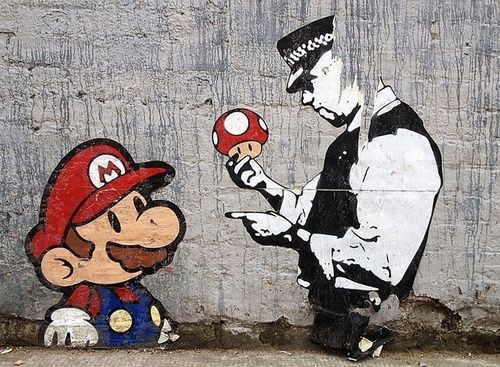Eric Zimmerman’s light-hearted attempt at unpacking and explaining the ideas and concepts surrounding the narrative and interactivity is indeed a great read. I personally am drawn to the text simply by his sense of humour. There is something playful about it. All about it in fact. And that makes reading an “interactive” experience in some sense; I feel like I have just had an interview with the guy. Of course, I am using the word “interactive” rather loosely here. Zimmerman will probably comment that is undesirably naughty.
This text is a great start to discussing about the concepts at hand. As opposed to simply being fixated on definitions, Zimmerman provides us with points of departure, from which we can let our imagination take flight. And let the game begin. I like that for each of the concepts (Narrative, Interactivity, Play and Games), he lists possible modes, categories, elements, attributes, avenues for us to explore how we might best grapple with this whole matrix of ideas. Through this whole process of becoming more aware of the media that we are dealing with, Zimmerman encourages a sort of excitement in searching for breakthroughs, or as he puts it himself “not to replicate existing forms but to invent new ones.”
Apart from opening up all these more theoretical and conceptual mappings of the concepts, Zimmerman also illustrates his points by raising a few great examples.
Chess, as the example of a game that simulates a two-player interaction and more of a cognitive interactivity in this battle of wits. But at the same time there is a narrative of war, heroes and playable characters, triumph in stratagem, albeit unconventional, yet there is a narrative structure there.
Pac-Man was another example which he employed to show us how even the most explicit interactivity can have sophistication in its use of narrative. This widely played arcade game is a story of life and death, the society at large with all these embedded into the game-play itself. And we recognize these things in a very integrated level through the playful connection with the Pac-Man character.
I feel that the reading will serve as a good guide in brain storming and conceptualizing ideas for interactive narratives. However, the conundrum of the mash-up of concepts continues to be daunting to me. And I would want to really take time to figure my way around a little. Where do I position myself within the whole process, as auteur, as facilitator or as a participant amongst the audience as well?
Also, there is this definition that Zimmerman offers us regarding Play. Wherein he says that play is freedom of choice within a fixed structure. Play exists because of the rules and constrains and in spite of them as well. Here, I find that either I do not understand it enough or I might need further exploration, as I am concerned about how to be convincing and compelling enough that this play will be able to take place within the systems I create.
In conclusion I think that Zimmerman was really trying to push for a certain kind of value in all these things and how we might exact pleasure from it. Pleasure from the media that is intrinsic to the media itself, differing from say a book or a film. I think his points will be good to negotiate this and find a way to start. I hope, though, for the ideas to form more organically and in a way not prioritizing or setting limits for any of these interconnected concepts.
“I think the key divide between the interactive media and the narrative media is the difficulty in opening up an emphatic pathway between the gamer and the character, as differentiated from the audience and the characters in a movie or a television show.”
Steven Spielberg

